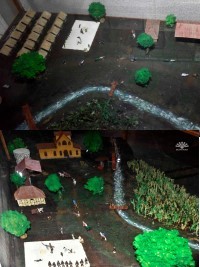|
||||||||||||||||||
|
|
iciHaiti - Did you know ? : Colonial habitation 20/10/2021 07:55:38
The "enslaved" were grouped into "families" in huts measuring about 30 feet long (9.14m) by 15 feet (4.57m) wide, sometimes divided by an area where they raised poultry. Their beds consisted of one or two planks set on sleepers, sometimes covered with a mat. Their furniture was reduced to a few calabashes, sometimes a bench and a table and wooden utensils. In the habitations of the plains, the huts were made of hurdles supporting a cob of earth and cow dung and sometimes formed veritable villages. But in mountain cafeterias, where marooning was common, slaves were housed in stone cells, windowless or with only a narrow loophole. At the end of the 18th century, Saint Domingue was the richest French colony in America, with 800 sugar habitations, more than 3,000 cafeterias and multiple plantations of cocoa, indigo, cotton... IH/ MUPANAH
|
|
Why IciHaiti ? |
Contact us |
Français
Copyright © 2010 - 2025 IciHaiti.com |


